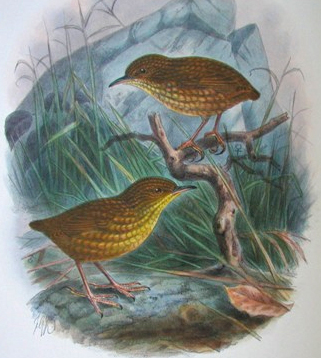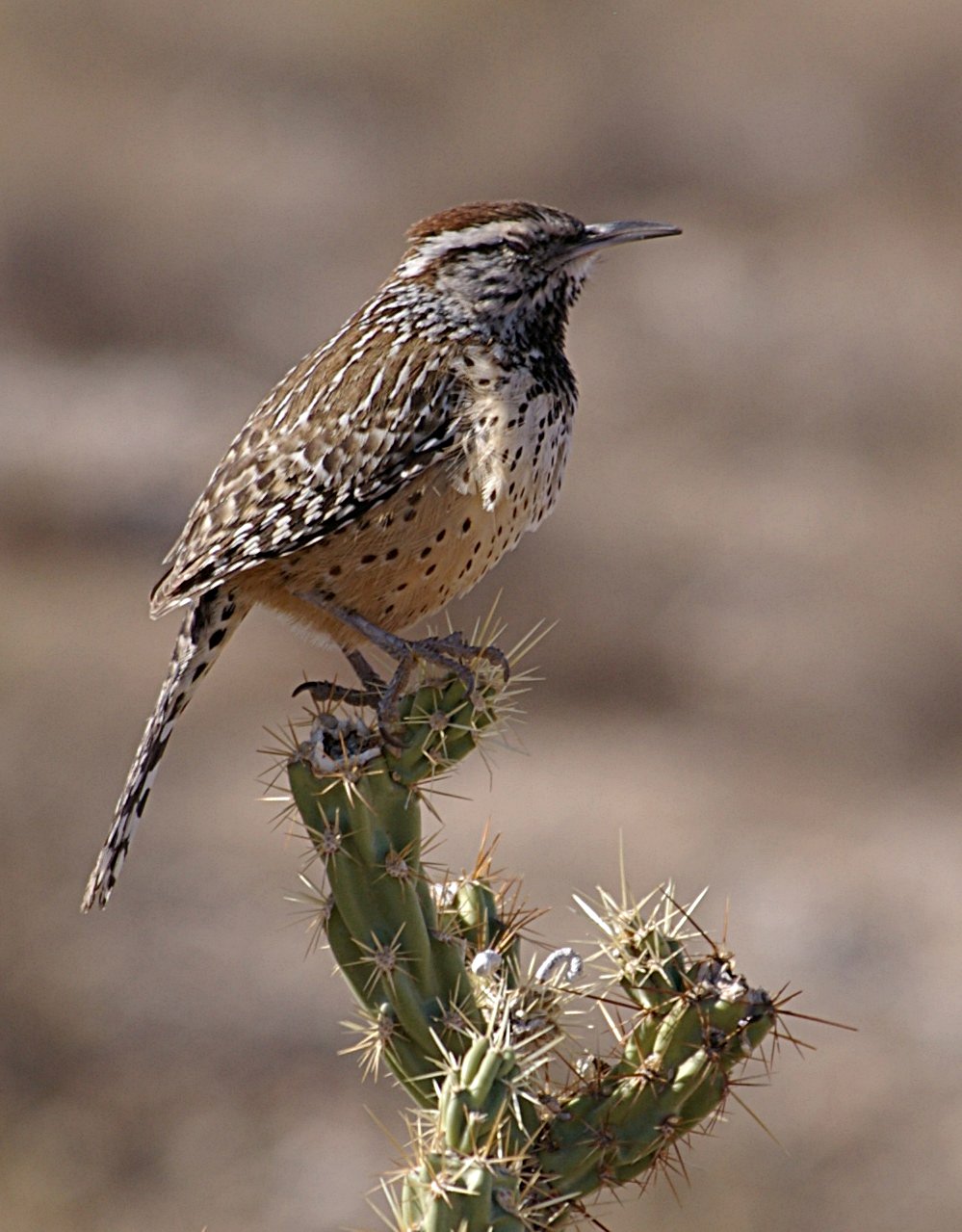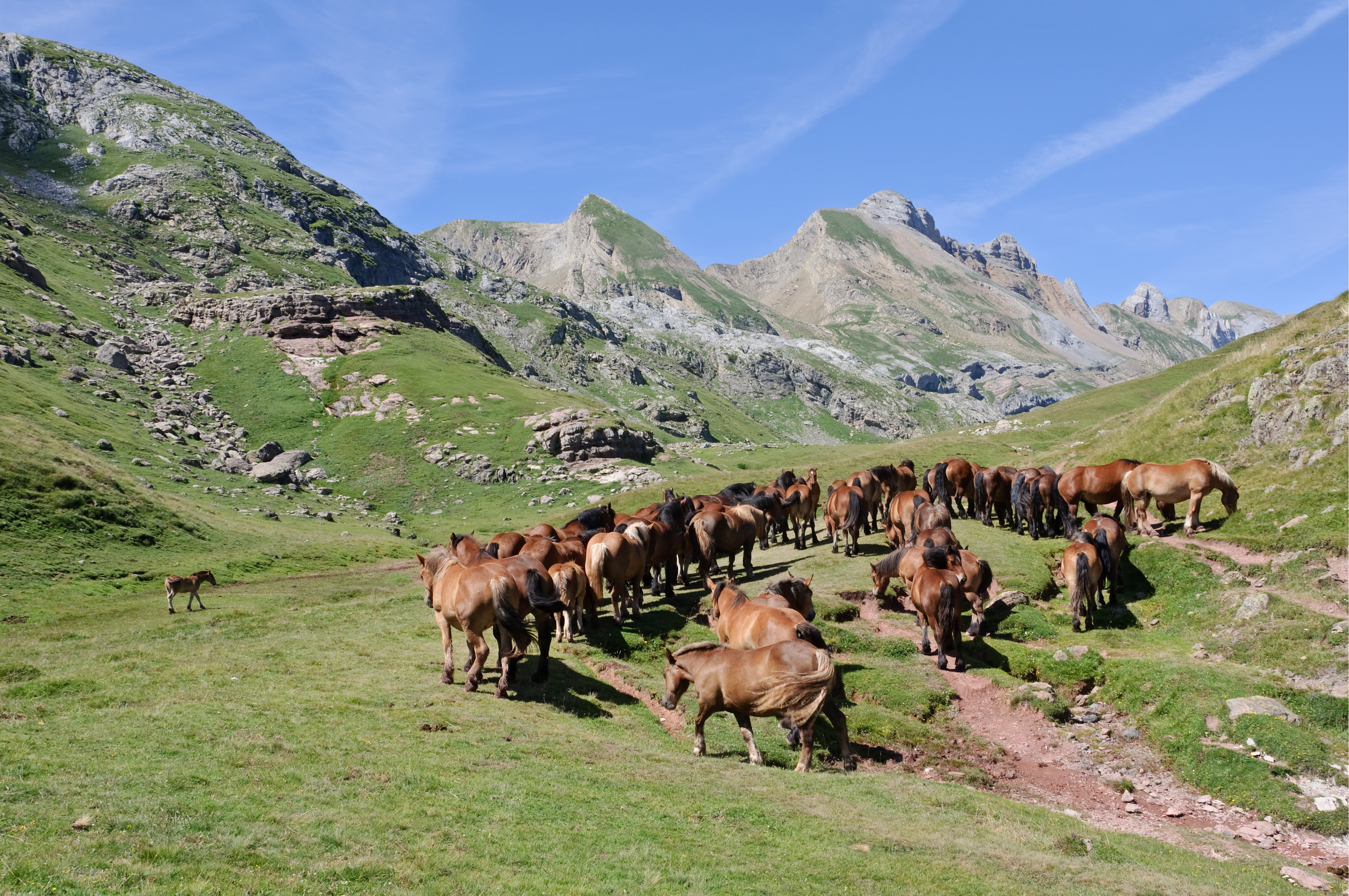|
Acanthisittidae
The New Zealand wrens are a family (Acanthisittidae) of tiny passerines endemic to New Zealand. They were represented by seven Holocene species in four or five genera, although only two species in two genera survive today. They are understood to form a distinct lineage within the passerines, but authorities differ on their assignment to the oscines or suboscines (the two suborders that between them make up the Passeriformes). More recent studies suggest that they form a third, most ancient, suborder Acanthisitti and have no living close relatives at all. They are called "wrens" because of similarities in appearance and behaviour to the true wrens (Troglodytidae) but are not members of that family. New Zealand wrens are mostly insectivorous foragers of New Zealand's forests, with one species, the New Zealand rock wren, being restricted to alpine areas. Both the remaining species are poor fliers and four of the five extinct species are known or suspected to have been flightless. ... [...More Info...] [...Related Items...] OR: [Wikipedia] [Google] [Baidu] |
Lyall's Wren
Lyall's wren or the Stephens Island wren (''Traversia lyalli'') was a small, flightless passerine belonging to the family Acanthisittidae, the New Zealand wrens. Now extinct, it was once found throughout New Zealand, but when it came to the attention of scientists in 1894, its last refuge was Stephens Island in Cook Strait. Often claimed to be a species driven extinct by a single creature (a lighthouse keeper's cat named Tibbles), the wren in fact fell victim to the island's numerous feral cats. The wren was described almost simultaneously by both Walter Rothschild and Walter Buller. It became extinct shortly thereafter. Taxonomy The bird's scientific name commemorates the assistant lighthouse keeper, David Lyall, who first brought the bird to the attention of science. It was described as a distinct genus, ''Traversia'', in honour of naturalist and curio dealer Henry H. Travers, who procured many specimens from Lyall. ''Traversia'' is a member of the family Acanthisittidae ... [...More Info...] [...Related Items...] OR: [Wikipedia] [Google] [Baidu] |
Xenicus
''Xenicus'' is a genus of birds in the family ''Acanthisittidae''. It contains New Zealand wrens. Species *New Zealand rock wren, ''Xenicus gilviventris'' *Bushwren, †''Xenicus longipes'' (extinct) *South Island stout-legged wren, †''Xenicus yaldwyni'' (extinct) – South Island The South Island ( , 'the waters of Pounamu, Greenstone') is the largest of the three major islands of New Zealand by surface area, the others being the smaller but more populous North Island and Stewart Island. It is bordered to the north by ..., New Zealand *Stout-legged wren, North Island stout-legged wren, †''Xenicus jagmi'' (extinct) – North Island, New Zealand Lyall's wren was classified as ''Xenicus lyalli'' but is quite divergent, so it is placed in its own genus, ''Traversia''. Taxonomy The stout-legged wrens formed a species pair. They had reduced wings and robust legs indicating that they were adapted to a Terrestrial animal, terrestrial existence and were either flightless bi ... [...More Info...] [...Related Items...] OR: [Wikipedia] [Google] [Baidu] |
Passerine
A passerine () is any bird of the order Passeriformes (; from Latin 'sparrow' and '-shaped') which includes more than half of all bird species. Sometimes known as perching birds, passerines generally have an anisodactyl arrangement of their toes (three pointing forward and one back), which facilitates perching. With more than 140 families and some 6,500 identified species, Passeriformes is the largest order of birds and one of the most diverse clades of terrestrial vertebrates, representing 60% of birds.Ericson, P.G.P. et al. (2003Evolution, biogeography, and patterns of diversification in passerine birds ''J. Avian Biol'', 34:3–15.Selvatti, A.P. et al. (2015"A Paleogene origin for crown passerines and the diversification of the Oscines in the New World" ''Molecular Phylogenetics and Evolution'', 88:1–15. Passerines are divided into three suborders: New Zealand wrens; Suboscines, primarily found in North and South America; and songbirds. Passerines originated in the ... [...More Info...] [...Related Items...] OR: [Wikipedia] [Google] [Baidu] |
North Island Stout-legged Wren
Stout-legged wren is a common name referring to two species of extinct New Zealand wrens: the North Island stout-legged wren or Grant-Mackie's wren (''Xenicus jagmi''), and the South Island stout-legged wren or Yaldwyn's wren (''Xenicus yaldwyni''). These small birds were endemic to New Zealand and were previously included in the genus '' Pachyplichas''. History and etymology The holotype for the North Island wren is a right tarsometatarsus (AU 7102.20 in the collections of the Auckland University Geology Department) collected on 25 August 1978 from the Ruakuri Cave in the Waitomo District of North Island of New Zealand. The specific epithet honours Dr John Grant-Mackie, Associate Professor of Geology at Auckland University, in recognition of his support for graduate students and for contributions to avian palaeontology. The holotype for the South Island wren is a right tarsometatarsus (NMNZS 22683 in the collections of the National Museum) collected on 29 September 1983 fr ... [...More Info...] [...Related Items...] OR: [Wikipedia] [Google] [Baidu] |
Rifleman (bird)
The rifleman (''Acanthisitta chloris'') () is a small insectivorous passerine bird that is endemic to New Zealand. It belongs to the family Acanthisittidae, also known as the New Zealand wrens, of which it is one of only two surviving species. The rifleman resembles a wren in form, but is not related to the family of true wrens, Troglodytidae, nor the fairy-wrens of Australia. Taxonomy The rifleman was described by Anders Sparrman in 1787 based on a bird collected in Queen Charlotte Sound in the Marlborough Sounds of New Zealand's South Island. He originally placed it in the nuthatch genus '' Sitta''. Frédéric de Lafresnaye placed it in its own monotypic genus ''Acanthisitta'' in 1842. The name ''Acanthisitta'' is a portmanteau of the thornbill genus '' Acanthiza'' and the genus ''Sitta''. The rifleman is named after a colonial New Zealand regiment because its plumage drew similarities with the military uniform of a rifleman. Description The rifleman is New Zealand's s ... [...More Info...] [...Related Items...] OR: [Wikipedia] [Google] [Baidu] |
Long-billed Wren (New Zealand)
The long-billed wren (''Dendroscansor decurvirostris'') is an extinct species of New Zealand wren formerly endemic to the South Island of New Zealand. It was the only species in the genus ''Dendroscansor''. It shares the name "long-billed wren" with the Brazilian bird '' Cantorchilus longirostris.'' New Zealand's long-billed wren was a small bird with stout legs and tiny wings. Its reduced sternum suggests that it had weak flight muscles and was probably flightless, like the recently extinct Lyall's wren. Its weight is estimated at 30 g, which makes it heavier than any surviving New Zealand wren, but lighter than the also-extinct stout-legged wren. The bill of this species was both long and curved, unlike that of all other acanthisittid wrens. The species is known only from subfossils at four sites in Northwest Nelson and Southland; it seems to have been absent from the North Island and eastern South Island. The holotype was collected in 1986 from Moonsilver Cave, on Barran ... [...More Info...] [...Related Items...] OR: [Wikipedia] [Google] [Baidu] |
Wren
Wrens are a family, Troglodytidae, of small brown passerine birds. The family includes 96 species and is divided into 19 genera. All species are restricted to the New World except for the Eurasian wren that is widely distributed in the Old World. In Anglophone regions, the Eurasian wren is commonly known simply as the "wren", as it is the originator of the name. The name ''wren'' has been applied to other, unrelated birds, particularly the New Zealand wrens ( Acanthisittidae) and the Australian wrens ( Maluridae). Most wrens are visually inconspicuous though they have loud and often complex songs. Exceptions include the relatively large members of the genus '' Campylorhynchus'', which can be quite bold in their behaviour. Wrens have short wings that are barred in most species, and they often hold their tails upright. Wrens are primarily insectivorous, eating insects, spiders and other small invertebrates, but many species also eat vegetable matter and some eat small frogs and l ... [...More Info...] [...Related Items...] OR: [Wikipedia] [Google] [Baidu] |
South Island Stout-legged Wren
Stout-legged wren is a common name referring to two species of extinct New Zealand wrens: the North Island stout-legged wren or Grant-Mackie's wren (''Xenicus jagmi''), and the South Island stout-legged wren or Yaldwyn's wren (''Xenicus yaldwyni''). These small birds were endemic to New Zealand and were previously included in the genus '' Pachyplichas''. History and etymology The holotype for the North Island wren is a right tarsometatarsus (AU 7102.20 in the collections of the Auckland University Geology Department) collected on 25 August 1978 from the Ruakuri Cave in the Waitomo District of North Island of New Zealand. The specific epithet honours Dr John Grant-Mackie, Associate Professor of Geology at Auckland University, in recognition of his support for graduate students and for contributions to avian palaeontology. The holotype for the South Island wren is a right tarsometatarsus (NMNZS 22683 in the collections of the National Museum) collected on 29 September 1983 fr ... [...More Info...] [...Related Items...] OR: [Wikipedia] [Google] [Baidu] |
New Zealand Rock Wren
The New Zealand rock wren (''Xenicus gilviventris'') is a small New Zealand wren (family (biology), family Acanthisittidae) Endemism, endemic to the South Island of New Zealand. Its Māori language, Māori names include ("little complaining bird"), , and ("twitch", after its bobbing motion). Outside New Zealand it is sometimes known as the rockwren to distinguish it from the unrelated rock wren of North America. The rock wren is currently restricted to Alpine climate, alpine and subalpine areas of the South Island. It is a poor flier and highly Terrestrial locomotion, terrestrial, feeding in low scrub, open scree, and rockfalls. The rock wren and Rifleman (bird), rifleman are the only two surviving New Zealand wrens; the rock wren's closest relatives were the extinct stout-legged wrens, followed by the extinct bushwren. Its numbers are declining due to predation by introduced species, introduced mammals. Description The rock wren is a very small, almost tailless bird that ... [...More Info...] [...Related Items...] OR: [Wikipedia] [Google] [Baidu] |
Suboscine
The Tyranni (suboscines) are a suborder of passerine birds that includes more than 1,000 species, a large majority of which are South American. It is named after the type genus '' Tyrannus''. These have a different anatomy of the syrinx musculature than the oscines (songbirds of the larger suborder Passeri), hence the common name of ''suboscines''. The suboscines originated in South America about 50 million years ago and dispersed into the Old World likely via a trans-Atlantic route during the Oligocene. Their presence in the early Oligocene of Europe is well documented by several fossil specimens. Systematics The suborder Tyranni is divided into two infraorders: the Eurylaimides and the Tyrannides. The New Zealand wrens in the family Acanthisittidae are placed in a separate suborder Acanthisitti. The phylogenetic relationships of the 16 families in the Tyranni suborder is shown below. The cladogram is based on a large molecular genetic study by Carl Oliveros and collaborator ... [...More Info...] [...Related Items...] OR: [Wikipedia] [Google] [Baidu] |
Sedentism
In anthropology, sedentism (sometimes called sedentariness; compare sedentarism) is the practice of living in one place for a long time. As of , the large majority of people belong to sedentary cultures. In evolutionary anthropology and archaeology, ''sedentism'' takes on a slightly different sub-meaning, often applying to the transition from nomadic society to a lifestyle that involves remaining in one place permanently. Essentially, sedentism means living in groups permanently in one place. The invention of agriculture led to sedentism in many cases, but the earliest sedentary settlements were pre-agricultural. Initial requirements for permanent, non-agricultural settlements For small-scale nomadic societies it can be difficult to adopt a sedentary lifestyle in a landscape without on-site agricultural or livestock breeding resources, since sedentism often requires sufficient year-round, easily accessible local natural resources. Non-agricultural sedentism requires goo ... [...More Info...] [...Related Items...] OR: [Wikipedia] [Google] [Baidu] |
Extinction
Extinction is the termination of an organism by the death of its Endling, last member. A taxon may become Functional extinction, functionally extinct before the death of its last member if it loses the capacity to Reproduction, reproduce and recover. As a species' potential Range (biology), range may be very large, determining this moment is difficult, and is usually done retrospectively. This difficulty leads to phenomena such as Lazarus taxon, Lazarus taxa, where a species presumed extinct abruptly "reappears" (typically in the Fossil, fossil record) after a period of apparent absence. Over five billion species are estimated to have died out. It is estimated that there are currently around 8.7 million species of eukaryotes globally, possibly many times more if microorganisms are included. Notable extinct animal species include Dinosaur, non-avian dinosaurs, Machairodontinae, saber-toothed cats, and mammoths. Through evolution, species arise through the process of specia ... [...More Info...] [...Related Items...] OR: [Wikipedia] [Google] [Baidu] |






